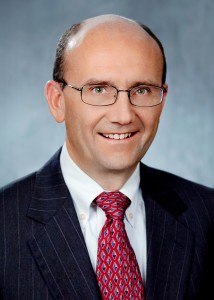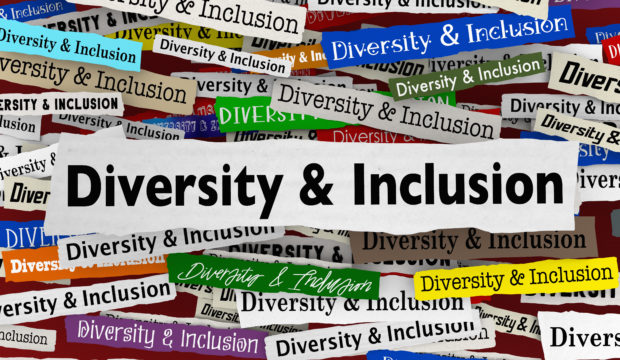As purveyors of talent for the insurance industry, universities offering risk management and insurance programs need to bring a more diverse group of job candidates forward to hiring professionals, the leader of one university program said recently.
Michael Angelina, executive director of the Maguire Academy of Insurance and Risk Management at Saint Joseph’s University Haub School of Business in Philadelphia, revealed that the university, in partnership with some of the largest industry players, is embarking on an initiative to attract people of color into the industry.
“The insurance industry has got a diversity issue. Can university insurance programs help solve that problem? I think the answer is yes,” Angelina told Carrier Management during a recent phone interview.
“We’re a supplier of talent at the end of the day. The industry is coming to us and hiring our student. That’s the product we sell,” he said, noting that his phrasing of that idea might be viewed as heresy within the walls of Saint Joseph’s. “But that’s what we do. We’re here to educate,” he said.
Academy leaders and board members are currently talking with American International Group, Chubb, Zurich, Marsh, Aon and Philadelphia Insurance Companies about an idea that wasn’t initially developed just as a solution to the problem of racial inequity in the ranks of leadership—and throughout the P/C industry. Instead, it started as an overarching solution to the industry’s growing talent shortage.
Sean Sweeney, the chair of the Maguire Academy board of governors, who is also a former CEO of Philadelphia Insurance Companies and board member for Cristo Rey High School in Philadelphia, spearheaded the idea of bringing his three worlds together, Angelina said, noting that Sweeney started talking about it in mid-March. In fact, the idea surfaced when Sweeney attended the last academy in-person Insurance and Reinsurance Symposium—an annual event that features industry executives addressing students on relevant industry topics ranging from emerging risks to social inflation to parametrics to InsurTech trends. The event, coincidentally, took place on the same day that Breonna Taylor was killed in Kentucky, one of several incidents that would later fuel Black Lives Matter protests throughout the nation, expanding the spotlight on racial injustice from police brutality to business divides.
The industry has been talking for years about the talent gap and about all of the industry professionals in their 50s and 60s who will be retiring, Sweeney said, as he reflected following the Symposium that brought insurance veterans and some of the industry’s next generation together. Angelina recalled Sweeney describing the great careers in the insurance industry—noting that while a line underwriter may not pull down the million-dollar salaries of top executives, their jobs provide steady incomes.
With those types of stable jobs throughout all insurance functions, the industry could open up a door to opportunity for Cristo Rey high school students, Sweeney realized, proposing the idea of partnering with the network of inner city Catholic high schools. The schools provide a mix of four years of rigorous college preparatory academics with four years of professional work experience through a corporate work-study program. Essentially, students from low income families in economically deprived neighborhoods work for a five full days each month, funding most of their education. (Sixty percent of funds are earned through corporate work-study in mature schools, according to the Cristo Rey website, which says another 30 percent is secured through fundraising activities and 10 percent, roughly $1,000, comes from student families.)
While online sources show that Hispanic and Black Americans make up the majority of the student populations of the Cristo Rey schools, Saint Joseph’s is a very white and very Catholic university, with people of color making up roughly 11 percent of the students in the insurance program, Angelina said. The industry that the program serves knows that it has a diversity problem as well, he said.
 “It’s not just about recruiting and giving money. You’re with us through this journey through supporting us with the internships, and then at the end of the day, we’re going to graduate someone who’s been exposed to the CPCU curriculum, can speak the language of insurance, has had experience with you, and now they’re ready to hit the workforce.”
“It’s not just about recruiting and giving money. You’re with us through this journey through supporting us with the internships, and then at the end of the day, we’re going to graduate someone who’s been exposed to the CPCU curriculum, can speak the language of insurance, has had experience with you, and now they’re ready to hit the workforce.”“It’s not just about recruiting and giving money. You’re with us through this journey through supporting us with the internships, and then at the end of the day, we’re going to graduate someone who’s been exposed to the CPCU curriculum, can speak the language of insurance, has had experience with you, and now they’re ready to hit the workforce.”
With diversity initiatives rising higher up on corporate agendas throughout the world, Carrier Management sought out Angelina, in particular, because of the pioneering work that the Academy of Insurance and Risk Management had done to shine the light on the lack of gender diversity in the insurance industry back in 2013. While the academy updated that work in 2015 and 2018, Angelina has no numbers to share on the industry’s race demographics. Although the idea was on his radar screen, he told CM during a 2015 interview, the data is less accessible for race, he said. Unlike the case for race, even lists of names on corporate documents and websites can provide information for gender breakdowns with a high level of accuracy, he noted.
He speculated, however, that the gender research had an impact, noting that female students in the insurance program at the university represent 40 percent of the student population. “I actually think our diversity work helped improve that. Maybe not explicitly, but implicitly, I think we were sending messages that this is a good career, and I think the females in the program were recruiting more females into it” as a result, he said, expressing the hope that the latest initiative will boost that 11 percent demographic for people of color in the same upward direction in future years. In fact, Saint Joseph’s has an ambitious goal of raising that figure to over 25 percent in three years.
“You’ve got St. John’s [University] out there and Temple that are just by definition and location more diverse than we are that I think can also be part of the solution,” he said, pointing to other risk management university programs that can supply Black and brown graduates to insurers and brokers in the future.





















 NOAA Announces Latest AI-Driven Global Weather Models
NOAA Announces Latest AI-Driven Global Weather Models  Heating Fuel Haulers Temporarily Exempt From Drive Time Limits
Heating Fuel Haulers Temporarily Exempt From Drive Time Limits  Underwriter, Actuary Fears of AI Drop; Work Needed on Collaboration
Underwriter, Actuary Fears of AI Drop; Work Needed on Collaboration 






